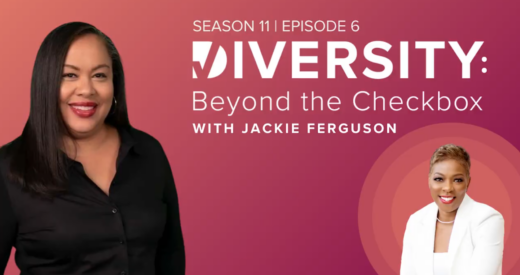Equality and equity are often used interchangeably and if you thought these two terms meant the same thing, you wouldn’t be alone. While they may sound similar, they have distinct definitions. As a company, you may want to foster a workplace environment that values diversity and achieves equity. But in order to accomplish this, it’s important to understand what equity is and also understand that it is not the same as equality.
Equality is defined as equal opportunities and treating everyone equally. Whereas, equity is defined as fairness and providing proportional opportunities, resources, and representation. When it comes to education, the workforce, and the government, we have equal opportunities. Every American in this country has a right to education, has the right to enter the workforce and be considered for jobs, and has the right to run for political office, regardless of their gender, race, sexual orientation, religious affiliation, etc. However, that does not mean everyone has a fair chance. For an example, even though every American is allowed to pursue higher education, not all Americans have the monetary resources and means to attend college. Many are living in underserved communities, making it difficult to achieve some of the academic standards that other students might have or access academic support and funds for higher education. Therefore, while equality is about everything being the same or equal, equity is about fairness and leveling the playing field. It requires the acknowledgment that each individual’s needs and obstacles are different.
Your company might strive to have a just and inclusive workplace, but providing equal opportunities to candidates and employees isn’t enough. There could still be barriers and challenges holding some individuals back. Inequity in the workforce can take shape in many different forms. Examples would be a differently abled employee not granted accommodations to perform well, a new parent not given flexibility to continue working while caring for their child, pay gap between men and women, lack of BIPOC and female leadership, absence of gender neutral bathrooms in the office, lack of inclusive language being used throughout the organization, and implicit biases.
Equity in the workplace benefits your company and brings more profits to your business. It helps you attract and retain high-quality and diverse talent, keeps employees motivated and engaged, enhances creativity, and increases productivity. It also helps ensure a diverse and inclusive environment where your business or organization can benefit from different ideas and skills, as well as innovation. You’ll notice better relationships between employees, effective problem solving and decision making, and a positive reputation and trust with customers or clients.
Identifying and taking a close look at the potential inequities in your workplace is the first step to making an equitable and inclusive environment for all of your employees and implementing fair hiring practices. Target specific goals and decide what areas need change. It’s important to start the process by paying attention to and examining what each of your employees’ needs are and whether or not they’re being met. It is also essential that you make your employees feel safe to open up and be honest to you about their concerns, especially as some of the matters might be of sensitive nature. If an employee has depression or anxiety, they should feel comfortable to request accommodations for their mental health needs.
Perhaps if an employee is disabled and can do their job better from home, you can permit remote working and provide the necessities for home office setup. To increase female and BIPOC leadership, offer career development and mentorship opportunities. To support breastfeeding moms, provide lactation spaces and paid parental leave. To create a welcoming and inclusive environment for trans and non-binary employees, make sure that there are gender neutral bathrooms in the office.
When it comes to diversity initiatives, it’s not enough to hire diverse people. Equitable compensation is also key. The pay gap between men and women and between whites and racial and ethnic minorities is existent across the US and in many industries. According to Payscale, the median salary for men is 19% higher than for women and women earn 81 cents for every dollar earned by men. There’s a bigger difference for women of color as well. Potential reasons could be lack of paid maternity and parental leave and gender and racial discrimination when it comes to promotions and advancement. Providing hiring managers and human resources with diversity trainings that address unconscious and racial biases is one way to help resolve the pay disparity. Checking in periodically with your employees can help you know if you’re making progress and success. It would also be helpful to emphasize how much you value equity and that is an integral part to your business or organization so that the members of your staff feel comfortable and safe to come forward with their concerns and offer input.
Achieving equity in the workplace is no simple task, nor something that can be accomplished in one day. It requires commitment, work, and effort. It requires a willingness to be open and listen to different perspectives, empathy to understand the unique needs of each of your employees, and an awareness of the complex issues resulting from inequity. What’s considered a fair work environment cannot always be easily determined. Deciding how to allocate proportional resources and programs will depend on each employee’s needs, based on the individual barriers and situations they’re facing.
Without a strong DEI training program in place, it can be easy to get lost in a spider web as you try to figure out an equity strategy for your company or organization. A third-party consultant can help you take action to improving workplace equity that will result in a more productive and satisfied team, a healthier environment, better rapport with customers and clients, and an increase in your bottom line. When you’re ready to get started planning your organization’s DEI initiatives and training, contact us.
Noreen Quadir is a content writer, with a background in social activism and a passion in advocating for diversity, inclusion, and equity. She writes for online blogs and publications, social media, and websites.






